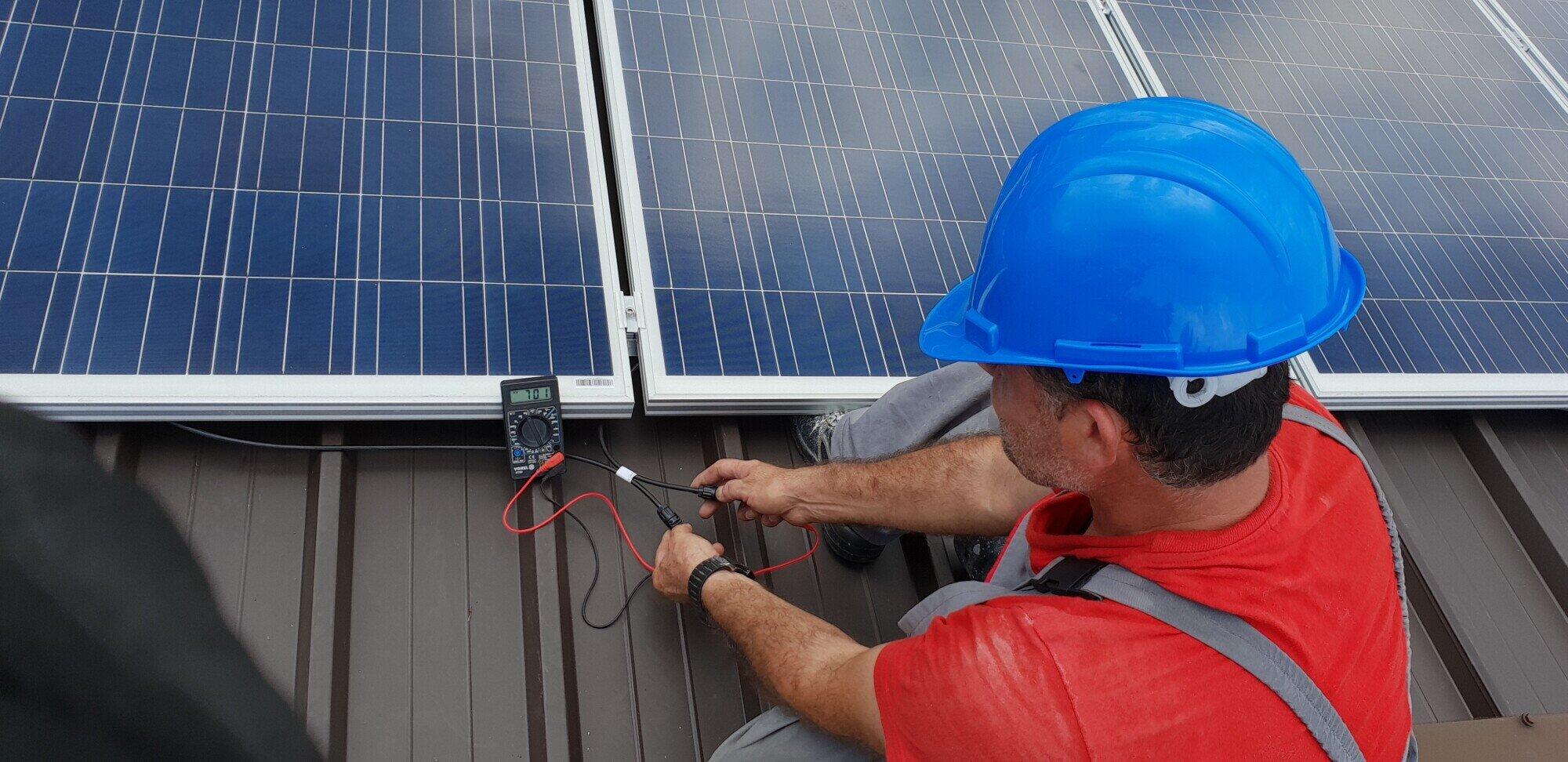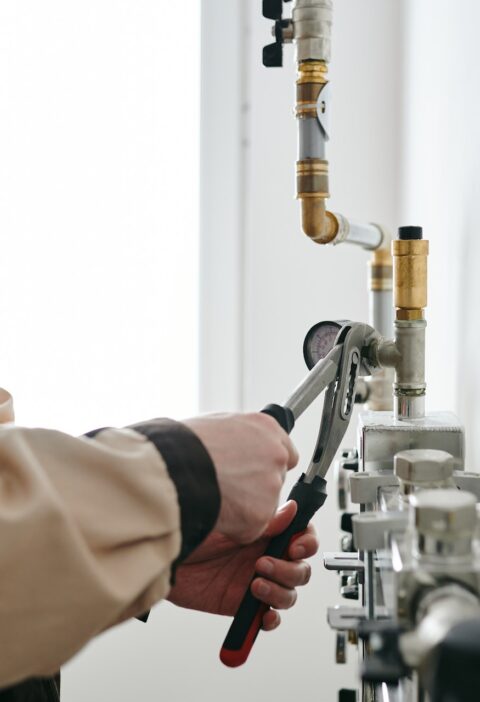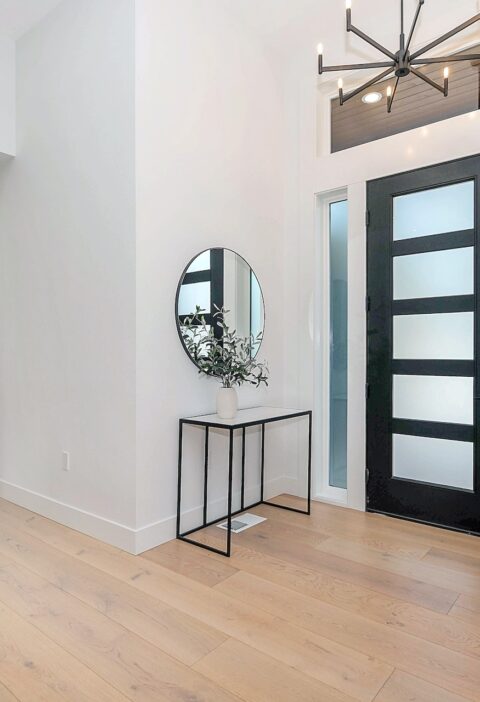Have you ever wondered, “How long does it take to install solar panels?” As interest in renewable energy grows, more homeowners are turning their gaze towards solar power.
This brings forward a slew of questions; chief among them is the timeframe for installation. Fear not, because we will provide answers explicitly tailored for you in this detailed guide.
Whether you aim to cut back on carbon emissions or save on power bills, learning the ins and outs of solar panel installation is key. So, let’s dive into the specifics of how long it takes to install solar panels.
Understanding the Basics
Allow us to begin with the basics. There’s more to installing solar panels than just putting them on your roof and hoping for the best.
The dance is well-organized and has a few key moves. Each step, from the first site inspection to turning on the power, is essential for ensuring your solar journey goes smoothly and successfully.
Site Assessment
The journey begins with a site assessment. Picture this: solar experts don their shades and visit your property to soak in the sunlight potential.
They look at your roof angle, possible shade, and any other unique features of your home solar panels to determine the best spots for getting the most sun. This phase usually takes a day or two, depending on the complexity of your space.
Designing Your Solar System
Once the solar experts have done the site assessment, it’s time for them to design your very own solar symphony. This isn’t as simple as putting panels on your roof; they have to carefully consider how many panels you need, where they’ll go, and how everything will be wired up.
Think of it as the blueprint for your solar system. Designing usually takes a couple of weeks to make sure that your system is perfectly suited to your energy needs.
Choosing the Right Solar Panels
Before you start using solar, you need to make a very important choice: which type of solar panels to get. There are so many to choose from that it can feel like you’re in a solar panel jungle. But don’t worry, brave solar explorer; we’ll help you make an informed choice.
Monocrystalline Solar Panels
One of the oldest types of solar panels is the monocrystalline panel, which is like a sleek Ferrari of the solar world. These panels are made from single-crystal silicon, which means they can turn sunlight into electricity very efficiently. This makes them an excellent choice for people who want to get the most out of their solar investment.
Polycrystalline Panels
If monocrystalline panels are like Ferraris, then polycrystalline panels are like reliable Honda Civics in the solar world. They are made of many small pieces of silicon, so they may not be as space-efficient or good at turning sunlight into electricity, but they are cheap. If you have a lot of roof space and want a cheap solar solution, polycrystalline panels might be the way to go.
Thin-Film Solar Panels
Now, we’ll talk about the lightest options: thin-film solar panels. These aren’t your typical silicon-based panels; they use layers of photovoltaic materials deposited onto a substrate.
Thin-film panels are more flexible, which makes them an excellent choice for awkward spaces or roofs that can’t handle the weight of traditional panels. However, they may need more space to produce the same amount of electricity.
CIGS Solar Panels
Copper-Indium-Gallium-Selenide (CIGS) solar panels are the best of the thin-film family. CIGS panels are very efficient and flexible and look like they came from the future, which is why they are often called the “space-age solution.”
Because they work well in low light, they are a good choice for people who live in places where the weather changes often. CIGS screens may not be as common as other types, but keep an eye on them as they continue to get better.
PERC Solar Panels
Let’s look at PERC (Passivated Emitter Rear Cell) solar panels, which are known for being very efficient. These panels have an extra layer on the back, making capturing and changing light easier.
As a result? Overall efficiency has gone up. PERC panels may be the best choice when you want to get the most power out of your solar system.
You will have to pay more for that extra efficiency, though.
Bifacial Solar Panels
If you like the idea of panels that can do two jobs, you might want to look into bifacial solar panels. Because the back is clear, you can see sunlight coming in from the front and back of these gems.
These panels can get more energy from the sun by reflecting it off surfaces. Bi-facial panels are a great choice if your roof is reflective or your mounting system is high up.
Key Considerations
Now that we know who the contenders are let’s talk about the essential things you must consider before making your choice. They will help you understand and make a choice that fits your needs if you look into these important factors. Get ready for a journey that will help you make better decisions!
Efficiency Matters
The most important thing about solar panels is how well they work. Think about how much electricity each type of panel can make from sunlight. A monocrystalline panel is the most efficient because its structure is uniform, and its silicon is high quality.
But where you live, how much space you have, and your budget are also things that affect which panels you choose for your solar system. Consider these things to make an informed choice and get the most out of solar energy.
Space Constraints
Take a close look at your roof or the space you have. Monocrystalline panels are a good choice for small rooftops because they are more efficient and take up less space.
If space isn’t an issue, on the other hand, look into polycrystalline panels that are easy on the wallet and offer solutions that don’t sacrifice performance. Think about these things to help you decide on your needs.
Budget Considerations
When making decisions, it’s essential to think about the budget. Polycrystalline panels are a cheaper alternative to monocrystalline panels, which are very efficient.
Look at your finances to find the best balance between being efficient and staying within your budget. Then, make a smart decision.
Roof Weight Capacity
Check to see how much weight your roof can hold before choosing the types of solar panels. Traditional panels last a long time and work well but can be heavy.
If the weight is too much for your roof, you might want to look into other options, such as thin-film panels. CIGS and other flexible options offer a light solution. Make smart choices to get the most out of performance and safety.
Aesthetics and Design
Solar panels can be nice to look at. Consider sleek and simple monocrystalline designs that will blend in with your roof.
The thin and flexible shape of CIGS technology gives it a futuristic look. The back of the bifacial panels is clear, adding a touch of modern elegance and increasing the energy they produce.
Navigating the Permitting Process
The process of getting permits could slow down the installation schedule. Obtaining permits from the local government makes sure that building codes are followed, which is essential for the safety and legality of the project.
In this step, you make detailed plans, do inspections, and deal with any problems that might come up. The time needed depends on how hard the project is, where it is, and how well the local office works. Ensure you have enough time and resources to make the installation go smoothly.
The Installation Marathon
With permits in hand, it’s time for the main event – installation. This is the phase most people are curious about when asking, “How long does it take to install solar panels?” The duration varies based on system size, roof complexity, and installation crew experience.
The process typically takes one to three days for a standard residential installation, when done by a seasoned California solar installer or one in another location. Crews begin by securely mounting racking systems to support the solar panels.
The panels are then wired together, and the inverter – a crucial component that converts solar energy into usable electricity – is installed. Finally, the system is connected to your electrical panel.
Getting the Green Light – Inspections
Once installation is complete, local authorities will conduct thorough inspections to ensure your solar system meets safety and code requirements. This step ensures environmental friendliness, safety, and compliance. Inspection duration varies based on area backlog, providing peace of mind and long-term reliability.
Powering Up Your Solar System
After completing the necessary inspections and installing the solar system, it’s time to proceed with commissioning. This involves turning on the system and verifying each component functions as intended.
The process typically spans a day, during which expert technicians fine-tune the system for optimal performance. Once completed, you’ll be ready to harness the sun’s infinite power for your energy needs. Embark on an eco-friendly journey towards a sustainable future!
Factors Influencing Installation Time
Now that we’ve thoroughly outlined the key steps in the installation process, we must delve into some significant factors that can potentially influence the duration of solar panel installation. By considering these factors, we can better understand the various elements that contribute to the overall timeline of the installation process.
Roof Type and Condition
The type and condition of your roof are two of the most important things determining how long it takes to install solar panels. It might take longer if your roof needs to be fixed or strengthened to fit the panels.
This includes checking the structure’s integrity, making supporting structures stronger, or fixing leaks or other problems already there. Getting your roof ready for installing solar panels makes the process go more smoothly and improves the system’s long-term performance and durability.
System Size and Complexity
The time it takes to install your solar system depends on its size and complexity. Installing bigger systems with more panels takes longer because they need more wiring and mounting.
Features of the property that make it unique, like multiple roof levels or shading from nearby trees or buildings, can make the timeline even longer. When planning your solar panel installation, remember these things to make the process go smoothly and quickly.
Permitting Efficiency
Quick and easy permitting is necessary to get solar projects up and running on time. Different local governments have different speed levels with which they can process permits.
In places where solar power is growing quickly, there may be longer wait times for permits to be approved. Because of this, planning solar installations requires careful thought about how local permits work.
Weather Conditions
Poor weather can delay installation schedules. When there are extreme conditions like heavy rain or thunderstorms, the process may be stopped temporarily to keep everyone safe. Although skilled solar installers plan their work around bad weather, using weather forecasts to ensure the installation goes smoothly.
Local Regulations
Getting permits and passing inspections for solar installations can be harder in some places because of their own rules. To make the process go smoothly and quickly, knowing what you’re doing and working closely with experienced solar professionals is essential. This way, you can speed up installing solar panels, saving time and avoiding possible problems.
If you want more information, check out this resource with a full solar panel installation guide. Don’t forget that buying solar panels will save you money and help build a better future for everyone.
Unraveling the Question of How Long Does It Take to Install Solar Panels
Asking “How long does it take to install solar panels?” won’t yield a one-size-fits-all answer. Variables such as roof condition, system size, permitting efficiency, weather, and local regulations can all impact the timeline.
Broadly, expect the process from site assessment to commissioning to span a few weeks to several months. Engage experienced solar professionals to navigate this journey smoothly.
Embrace patience, as the benefits of solar panels, such as reduced energy costs and environmental impact, are well worth the wait. Remember, installing solar panels is not just a purchase; it’s an investment in your future.
Did you like this guide? Great! Please browse our website for more!







